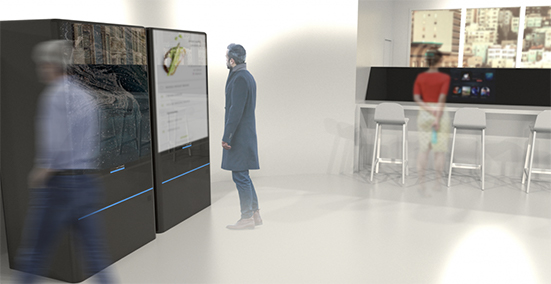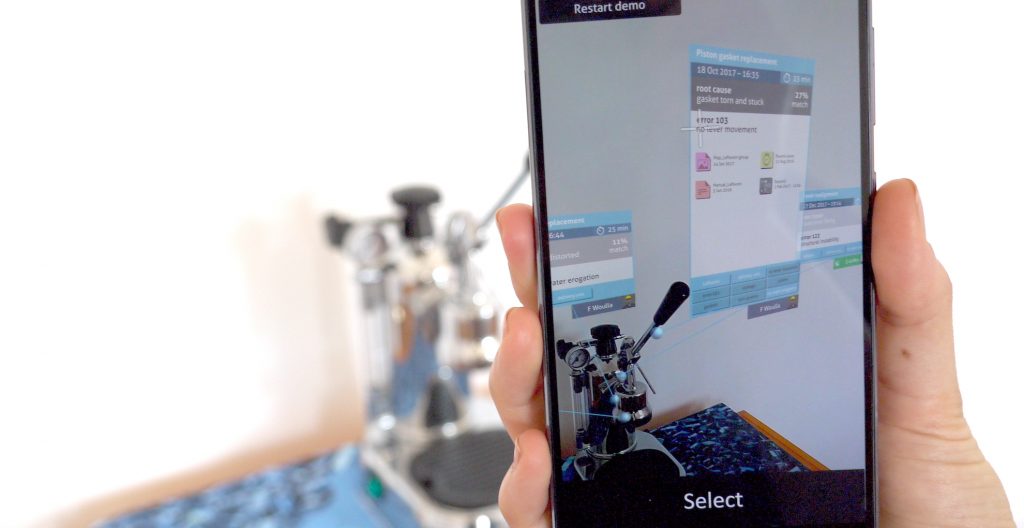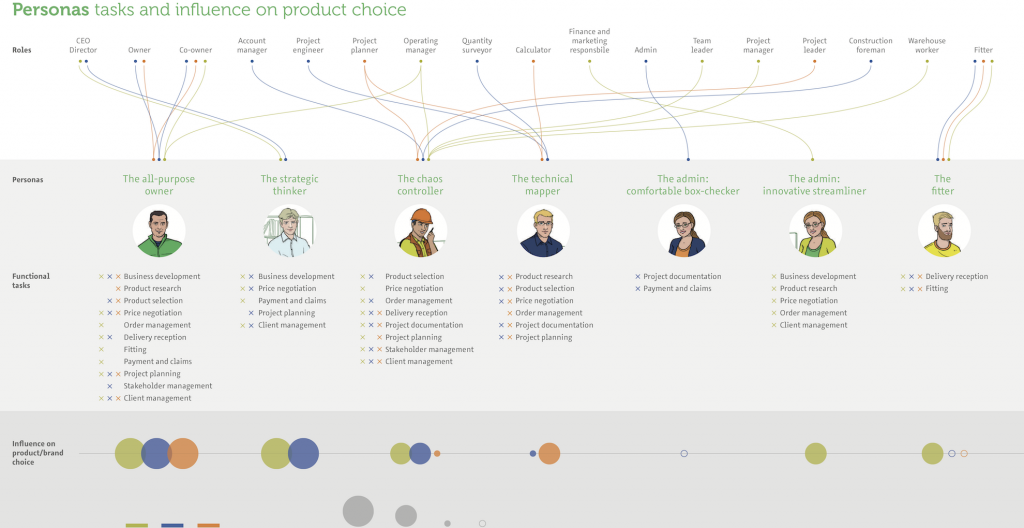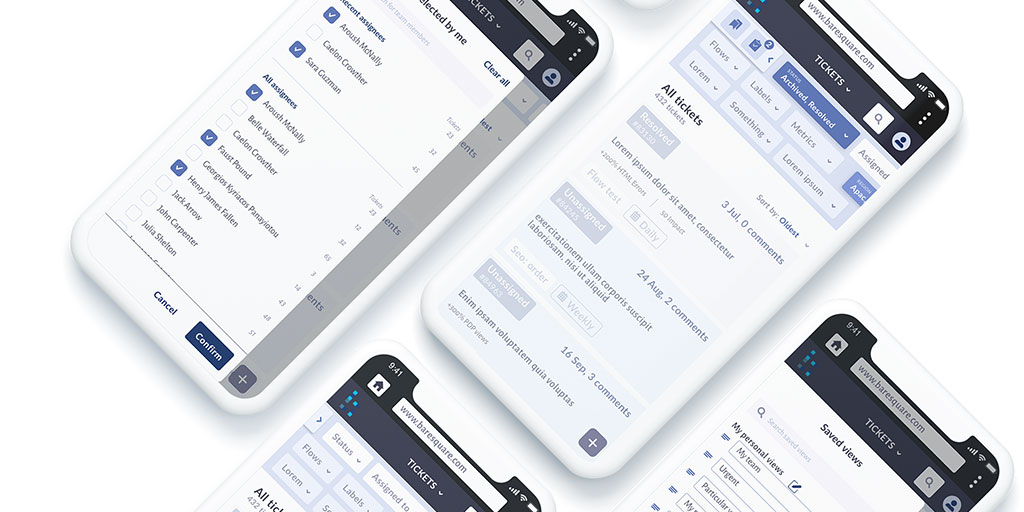Driving digital transformation one touch at a time

Driving digital transformation one touch at a time 3M Share Experientia gathered expert insights and voice of customer insights about intelligent self-service applications to create coherent storytelling for 3M clients and to provide compelling choices through predictive, engaging and learning touchpoints. We conducted a global benchmark research and interviews with industry experts to understand trends, changing paradigms and crucial concepts around intelligent self-service and created a B2B sales tool prototype: the innovation playbook that communicates the research outcomes. 3 things to know Global research Our benchmark focused extensively on Europe, US, China and Japan while industry experts joined our research from 5 different countries, bringing insights from all around the world. Driving digital transformation Design principles modelled empathic, people-centric frameworks for developing self-service experiences. Innovation playbook in action Future scenarios illustrate fast, intuitive, hassle-free experiences to end users who expect beauty and usability, familiarity and seamless connections. Gallery In depth Service mix: Design thinking Envisioning Business strategy design Information architecture Participatory design Service design Ethnography Context 3M offers a wide range of standard and customizable single-touch and multi-touch systems that are easy to integrate into OEM and display solutions, as well as a portfolio of fully integrated displays. This allows 3M clients to create interactive and immersive touchscreen experiences with systems and displays that are engineered for commercial applications and backed by advanced touch technology that’s ultra-fast, reliable and responsive. Challenge 3M reached out to Experientia to better understand its customers context and future scenarios that could strengthen its service offering. Research Experientia conducted a global benchmark research, collecting best practices and global innovative examples of self-service UX/UI systems, extracting relevant themes and trends. We interviewed 10 experts in architecture, design, food & beverage to gather first hand knowledge on how customer experiences are fueling innovation in the segment, and to understand trends, changing paradigms and crucial concepts around intelligent self-service. Design Experientia prioritized the interview insights using affinity mapping and constructed near-future scenarios analyzing different factors affecting UX. Ideation sessions generated new ideas to redefine how brands engage customers with intelligent self-service applications. Experientia designed a self service innovation playbook documenting research insights, design principles and scenario. It comes in a box containing the insights booklet, idea cards and impact map for co-creation, to aid collaborative design making. Impact The self service innovation playbook is now being used as a B2B sales tool to engage clients. Related projects All Services Behavioral design Research and assessment Strategy B2B Collaboration UI, redesigning the filter navigation experience B2B Reinventing customer and supplier interactions for a multinational flooring company B2B AR tools for industrial maintenance Go back to our portfolio
AR tools for industrial maintenance

AR tools for industrial maintenance Hitachi Share Experientia created digital AR tools that added intelligence and efficiency to the industrial maintenance and repair processes in the shopfloor’s context. A working hi-fi AR prototype was demonstrated to the C-suite. Based on the as-is maintenance process and existing pain points, Experientia conceptualized use-case scenarios, interaction flows and interfaces. 3 things to know Express delivery Our benchmark focused extensively on Europe, US, China and Japan while industry experts joined our research from 5 different countries, bringing insights from all around the world. Focus on core issues Through user journey mapping, main issues of industrial maintenance were uncovered and turned to key solutions for the interaction concept. Innovation throughout Cutting edge technology platforms like AR Core and Google’s Cloud Speech API were used to create a coherent system between mobile, smartwatch and earbuds. Gallery Multilayer tech ecosystem that combines three devices: smartphone, smartwatch and headphones Watch interface Watch interface Analysis diagram of the maintenance process and existing pain points In depth Service mix: Prototyping Information architecture Service design Behavioral modeling Context The client is an industrial player that has its own factories and also provides shop floor equipment to factories of their clients. In these environments any interruption in an assembly or production line is very costly. Challenge Efficient production time is lost due to misinformed, miscommunicated and non-standardized maintenance processes. The solution is a combination of user and system generated content that constantly improves according to daily incoming data about maintenance operations. The client would like to use AI and machine learning to provide values for all the stakeholders. Research Focused on worker’s needs to get jobs done rather than just spreading technologies, our solution was built on day-to-day tech providing maintainers with non-invasive support enabling them to be able to choose the best tech and device depending on the context and their personal experience. We used a (high end) coffee machine as a simulacrum of an industrial machine and mapped user journey and defined opportunities of digital tools for industrial maintenance. Design The proposed solution is a multilayer tech ecosystem that combines three devices: smartphone, smartwatch and headphones. They overlay timely, qualitative and statistical information to maintainers about assets, manuals and maintenance steps. The solution enables communication amongst colleagues and creates an easy reporting system, all integrated through a user and system generated database. Experientia designed a hi-fi prototype to showcase functionality and adequacy of an augmented multistep maintenance process on an exemplary machine. The prototype consists of an augmented reality app on mobile, an information app on a smartwatch and voice assistant interaction on a bluetooth headset. The demo across three devices proved interaction patterns and its benefits. The user journey consists of the six steps of a general maintenance process (asset failure, location, inspection, repair, spare parts, report and shift handover) organized along with macro phases (inspection, operation, communication, documentation). As second layer, we considered elements such as actors / tools and challenges and we highlighted the time consuming activities. Impact The client used the demo internally as a proof of concept to obtain further funding for future exploration As next steps the knowledge platform needs to be implemented and the solution should be tested on a shopfloor.. Related projects All Services Behavioral design Research and assessment Strategy B2B Collaboration UI, redesigning the filter navigation experience B2B Reinventing customer and supplier interactions for a multinational flooring company B2B Driving digital transformation one touch at a time Go back to our portfolio
Reinventing customer and supplier interactions for a multinational flooring company

Reinventing customer and supplier interactions for a multinational flooring company Tarkett Share Tarkett, a multinational flooring manufacturer, asked Experientia to explore ways to make them the easiest flooring company to interact with in Europe and the Americas. Experientia conducted in-depth ethnographic research, including contextual interviews and shadowing, in five different countries across Europe, the USA and Russia. We investigated the diverse range of stakeholders of the company, from architects, to flooring installers, wholesalers and retailers. 3 things to know Global research Our benchmark focused extensively on Europe, US, China and Japan while industry experts joined our research from 5 different countries, bringing insights from all around the world. Our local researchers conducted contextual interviews with architects, installers and retailers across five countries, ranging from observations of fitters removing flooring at Paris’ Roissy airport to discussions about design choices with architects in New York. Driving digital transformation Design principles modelled empathic, people-centric frameworks for developing self-service experiences. Innovation playbook in action Experientia designed innovative client-centered product/service solutions to improve supply chain performance, internal processes and company culture and grow Tarkett customer experiences. Gallery In depth Service mix: Design thinking Business strategy design Participatory design Behavioral modeling Ethnography Context A historic manufacturer of flooring products of all types, Tarkett faced the challenge of having to address increasingly fast supply lines at construction sites, while the move to digital experiences meant that they had to rethink and restructure their entire service experience. Challenge Our role as Tarkett’s user experience partner was to consolidate key knowledge dispersed across regional and functional divisions, act as an objective research partner in communicating their customers’ varied service and product needs and propose relevant, innovative solutions to improve the customer experience. Research Experientia interviewed and observed 80+ architects, flooring installers, wholesalers and retailers In USA, France, Netherlands, Sweden and Russia, using a range of ethnographic research methods including expert interviews, contextual inquiries and co-creation workshops. Stakeholders interviews and co-creation exercises with a variety of professional roles mapped the supply chain experience of commercial flooring products and services. Fieldwork results, customer journey maps and personas identified emerging themes ranging from sales relationships to life cycle approaches, product sampling to information management, deliveries to work flow issues. This initiative combined Tarkett’s EMEA, Russia and North America teams to share knowledge and work together on developing promising service concepts. To ensure that expert knowledge was incorporated into foundational research, we conducted stakeholder interviews with a range of employees from country sales managers to C-suite executives, who we involved throughout the research design and ideation processes. Design Experientia generated 150+ service opportunities for the different market segments. Co-design sessions with architects, interior designers, installers and retailers evaluated, prioritised and iterated select service opportunities. High value concepts were developed into concept prototypes and tested in the markets. Impact Our painpoint analysis was taken forward by the company into a detailed action plan: the simplest were addressed immediately, while other were the focus of more structured, longer term interventions. New initiatives and projects were launched, including a service for architects who could send their CAD drawings and renderings to Tarkett with 3 floor choices and would receive a few days later – and free of charge – a completed rendered visualization with those floors. Related projects All Services Behavioral design Research and assessment Strategy B2B Collaboration UI, redesigning the filter navigation experience B2B AR tools for industrial maintenance B2B Driving digital transformation one touch at a time Go back to our portfolio
Collaboration UI, redesigning the filter navigation experience

Collaboration UI, redesigning the filter navigation experience Baresquare Share Baresquare asked Experientia to identify the pain points of the current filtering experience of the Collaboration UI platform and to design an improved user interface. We investigated the current solution, deliver an interactive prototype and design specifications that offer optimized filter navigation experience. 3 things to know Co-desiging with the client on Miro boards Experientia carried out co-design workshop activities using remote visualization and collaboration tools. Co-design activities were managed using Miro boards and group video-calls, with stakeholders from different locations. Understanding multiple use cases and scenarios UI collaborations vary greatly depending on the context. The design team identified and developed solutions adaptable and scalable to variable use cases and future scenarios. Providing specific requirements We organized design specifications in Adobe XD, illustrating specific requirements for how the design should be executed. This includes dimensions, interaction patterns, ergonomic factors, aesthetic details (colors, fonts, and measurements of selected elements) and information (flows, behaviors and functionality). Gallery Stakeholder interviews Co-design Miro board Desk wireframes Hi-fi Prototype screens Design system In depth Service mix: Prototyping Information architecture Participatory design Context Baresquare is an International AI and data analytics company that developed Collaboration UI, an application enabling companies to multiply the efficiency of their teams and driving meaningful change in their business performance. Baresquare asked Experientia to identify the pain points in the UX of the Collaboration UI platform and to design an improved user interface that ensures an efficient, seamless, and pleasant interaction with the application. Challenge During the first 2 month “Sprint”, we worked with Baresquare to investigate the current solution via user interviews and a framing workshop, identified filter navigation best practices, and analyzed the competitor’s market. This allowed us to deliver an interactive prototype and design specifications that offered optimized filter navigation experience. In the second “Sprint” we focused on the redesign of the detailed ticket page and developed a new design system for desk and mobile app, providing clear direction and design specifications for an optimized color palette, typography, icon set, and main interactive components. Research Experientia conducted an in-depth analysis of the use of filters within the “collaboration UI” application. The analysis of the AS IS started with guided navigation tours, an heuristic review of the current UX/UI design according to Nielsen’s heuristics and interviews with tool users and stakeholders, to identify pain points and design opportunities. Fieldwork results and customer journey maps identified emerging themes ranging from platform usage, clients perspective, future vision and design opportunities. Based on these key findings, Experientia developed some alternative concepts and discussed these solutions during the remote framing workshop. Design Experientia iterated the selected concept and designed the look&feel of the user interface. We created a clickable prototype with an appealing visual design in Adobe XD. With the same tool we also provided specific requirements for how the design should be executed and created design specifications for the dev team of Baresquare. Related projects All Services Behavioral design Research and assessment Strategy B2B Reinventing customer and supplier interactions for a multinational flooring company B2B AR tools for industrial maintenance B2B Driving digital transformation one touch at a time Go back to our portfolio

